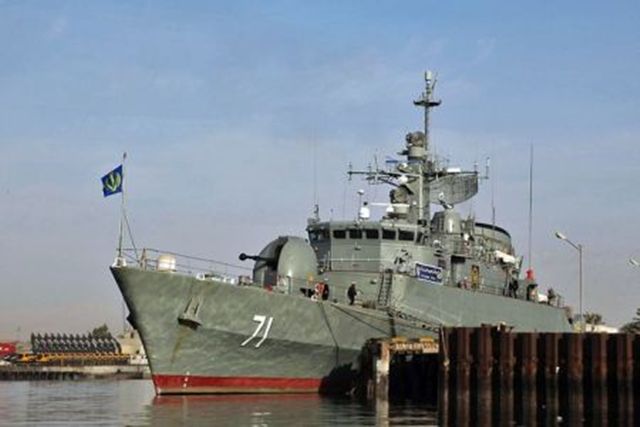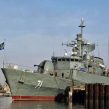
The Case of the Iranian Warships and the Suez Canal
Publication: Terrorism Monitor Volume: 9 Issue: 10
By:

Late last week two Iranian warships made the return trip through the Suez Canal after raising a storm of controversy by their transit through the Canal and their visit to a Syrian port in the Mediterranean. Iranian authorities announced the successful completion of the flotilla’s mission in the Mediterranean, while Rear Admiral Habibollah Sayyari, responding to Israeli and American concerns over their mission, declared, “The Zionist regime and other enemies could not take any actions against us whatsoever” (IRNA, March 5; Press TV, March 5). The ships are slated to continue their mission by providing security for shipping in the Red Sea.
The controversy began on February 17, when the Egyptian military agreed to the safe passage of two Iranian warships through the strategic Suez water route for the first time since Iran’s 1979 revolution (IRNA February 18; Sharq al-Wasat, February 18). According to Iranian state media, the 1,500-ton frigate Alvand, armed with torpedoes and Chinese-designed anti-ship missiles, and the British-built 33,000-ton supply ship Khark, with 250 crewmembers and the capacity to carry three helicopters, were on a year-long training assignment in a collaborative mission with the Syrian navy (Press TV, February 22). Alvand, a British-built Vosper Mark V frigate commissioned in 1971, is the flagship of the Iranian Navy.
The ongoing mission, according to Tehran, is a peaceful one. While abiding by international law, the naval operation aims to strengthen relations with other allies in the region, particularly Syria where the ships docked at Latakia, the nation’s main port (Press TV, February 28; Fars News, February 28). Moreover, Iran’s Deputy Army Commander Brigadier General Adbul-Rahim Mousavi stated that the naval operation was meant to display, especially to Israel, that Iran maintains the strongest army and naval power in the region, saying, “The Zionist regime was shocked by the presence of Iran’s naval ships in the Suez Canal” (IRNA, February 23; Press TV, February 23). Aside from the propaganda, what are the military capabilities of the warships? What were Iran’s foreign policy reasons for such a mission?
This was not the first time Iran has sent its warships into international waters. Since 2009, Iran has deployed six warships to global seas, including the Gulf of Aden and Sea of Oman, to demonstrate its military capability “in confronting any foreign threat on the country’s shores,” according to Admiral Sayyari (ISNA, May 14, 2009; for other Iranian naval operations, see Terrorism Monitor Briefs, October 1, 2009; Terrorism Monitor July 29, 2010). The objective of most of these naval operations has been to prevent sea piracy against Iranian commercial vessels, particularly oil tankers, though they also appear to be connected to the major changes underway in the Middle East (Haaretz, January 14, 2009; Press TV, January 23; Fars News, January 26).
Only two weeks before the transit of the Iranian ships, Iran’s Brigadier General Mousavi had urged his Egyptian military counterparts to make an historic decision to model their actions on the Iranian airmen who helped overthrow the Shah’s regime in 1979 (Press TV, February 5). With the fall of the Mubarak regime, which maintained a close relationship with Israel for over 30 years, and the political transformation sweeping across the Arab world, the Islamic Republic has found new opportunities to re-assert its regional influence, and the first ostensible shift of relations appears to be between Egypt and Iran.
The situation posed a major diplomatic challenge for Egypt’s military-led government, as it hopes to remain an ally of the United States and also uphold its peace treaty with the Israel, a country that views Iran as an existential threat to its security. Earlier last month, the Egyptian Ministry of Defense, which has been largely in charge of the country’s decision-making as of late, made a public statement that it cannot prevent passage in the Suez Canal to any country unless Egypt is in a state of war with that country (al-Jazeera, February 16). While the army is busy creating new amendments to the constitution and preparing for upcoming elections that would enable the country to move beyond the Mubarak era, the army-led government also appears to shy away from any conflict that could arise from the passage of Iranian warships. For the most part, Iran knows Egypt’s vulnerability and has exploited the situation with the navy’s Suez passage.
From the Israeli perspective, however, the Egyptian decision signals the end of a three-decade partnership that now finds Egypt a principal supplier of natural gas to Israel (Haaretz, February 18). According to the Israeli foreign minister, Avigdor Lieberman, the presence of the Iranian warships in the Mediterranean was a clear act of provocation (al-Arabiya, February 18). As Prime Minister Benjamin Netanyahu described it, Iran is opportunistically seeking to take advantage of the current instability in the Arab world and extend its influence in the region (Press TV, February 28). In many ways, the passage of the ships portends a possible war between Israel and Iran, and the Iranian naval operation marks a new strategic phase in the region following the Arab uprisings.
In reality, however, the Iranian ships served a mostly symbolic presence, perhaps as a warning to Israel and the U.S. against a possible attack on its nuclear facilities. Despite the fact that the two aging ships are no match for the American and Israeli navies and lack the ability to launch air attacks, the mere presence of these vessels can help Tehran display Iran’s military presence in a region undergoing political instability and unrest.
Tehran’s apparent attempt to flex its muscle amidst the turmoil in the Middle East is not merely designed to expand its sphere of regional influence, but perhaps more importantly, to exert influence over a brewing crisis on the domestic level. Since Iran’s decision to deploy ships was made before the uprisings that have now engulfed the region, it is possible that the display of naval operation was in fact intended to bolster state power and incite nationalist sentiment in Iran to enable the regime to regain legitimacy after the political unrest that followed the disputed presidential election of 2009. The foreign policy reason for Iran’s latest naval operation is therefore designed for an increasingly skeptical domestic audience and only to a lesser extent for regional strategic purposes.





